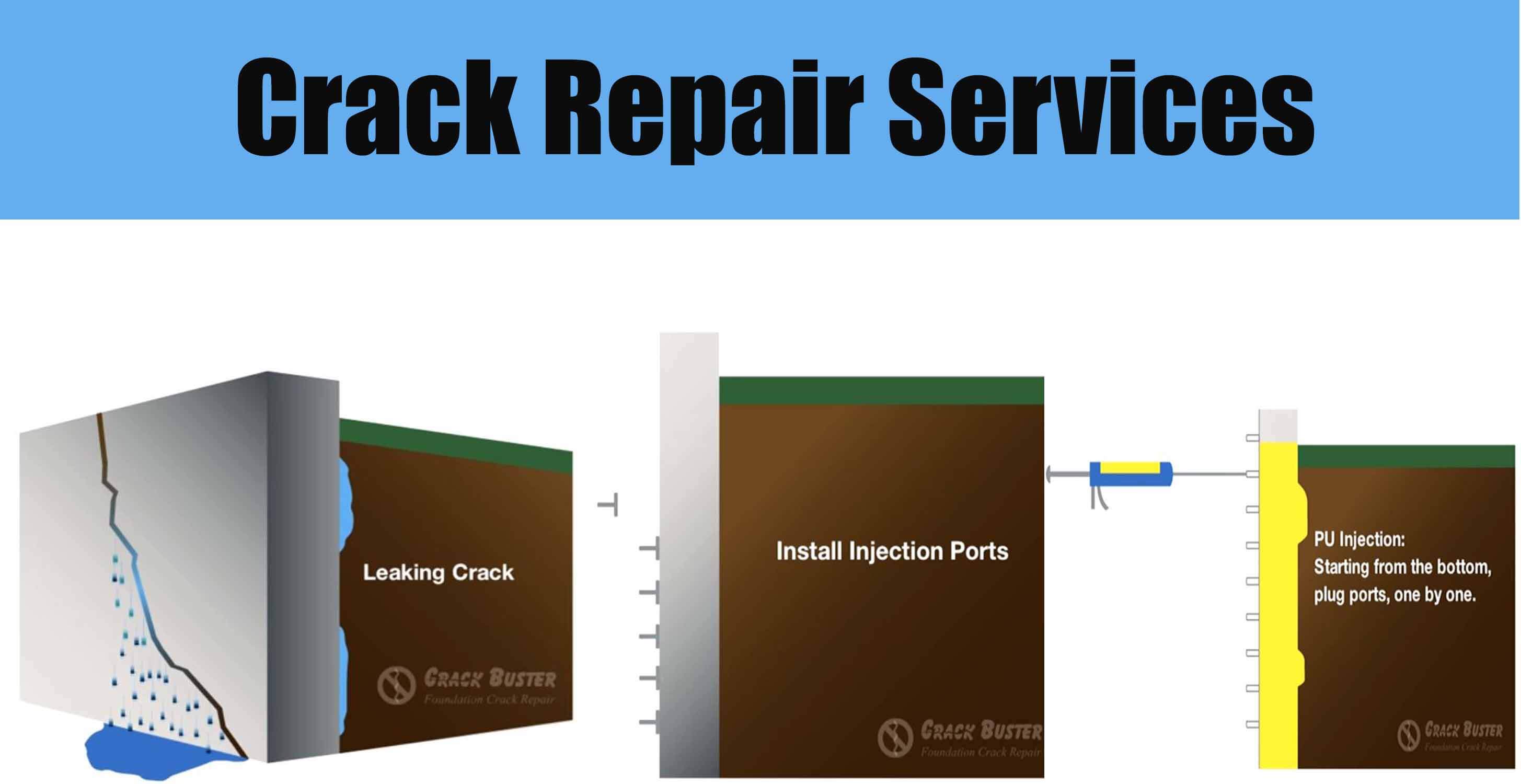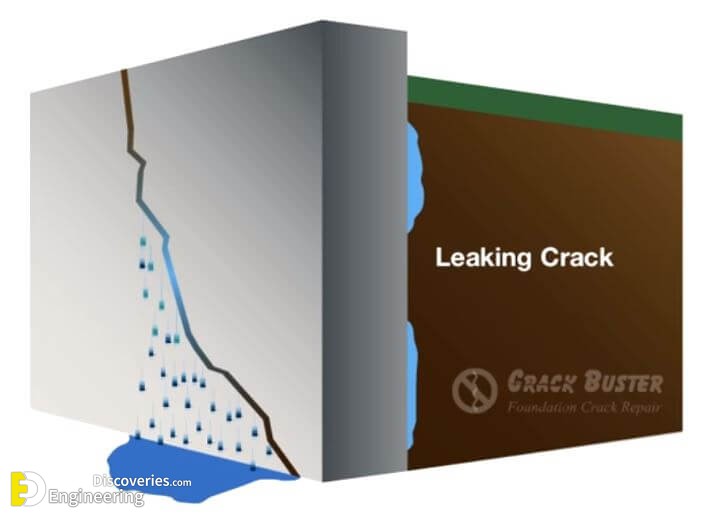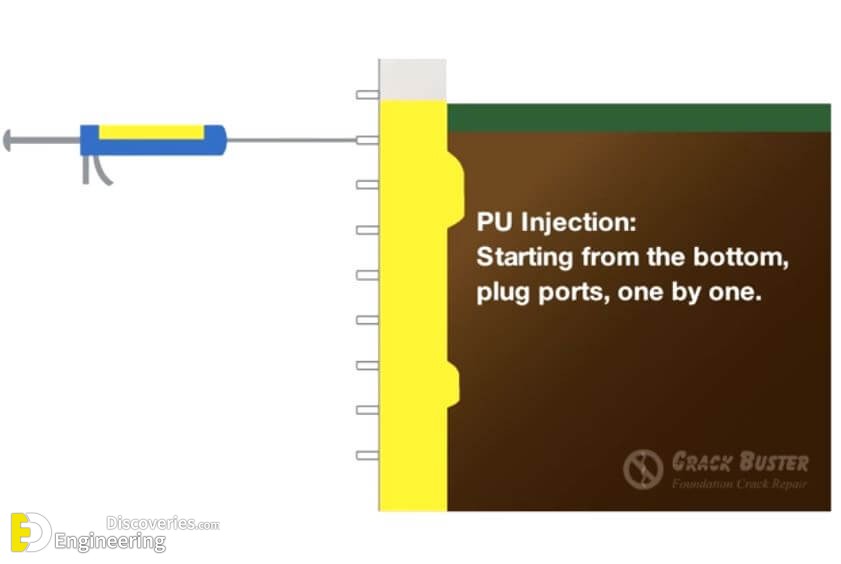Author
The crack injection works by filling the full width and length of the crack with a liquid epoxy or an expanding polyurethane foam. This is a permanent repair and does not have to be repeated. Unlike other surface repairs, the injected polymers are not exposed to weathering, traffic, or ultraviolet rays. Most importantly, injection of the cracks will prevent expensive repairs and problems in the future. The potential damage done by water leaks to the finished basement or the cost of repairing concrete walls caused by corrosion shows the clear advantages of permanent crack repair. The injection is the best repair of poured concrete walls.
1- Polyurethane Injection
Polyurethane is specially formulated for concrete repair, expanding upon contact with a special liquid to fill the crack. As the foundation continues to shift, the polyurethane remains flexible, thus stopping the leak permanently. Foundation concrete crack repair is done from the inside, making digging from the outside unnecessary. Holes are drilled along the crack through the soil and polyurethane is then injected.
2- Epoxy Injection
Epoxy Injection is recommended only for structural purpose, and even then only if the concrete is dry
How foundation cracks actually develop
Cracks can be found in almost all residential foundations. Often, they will occur in corners of windows, pour lines, holes for service lines, or rod ties. The various causes include:
1- High water content resulting in poor concrete mix
2- Rapid curing of concrete
3- Concrete forms removed prematurely (i.e. 2 days instead of 7 days)
4- Fill soil being improperly compacted
5- Uneven moisture around the foundation
6- Poor drainage
7- Hydrostatic water pressure
All houses will settle, but because soil properties vary, not every point on a foundation will settle uniformly, thus causing cracking walls and racking door frames. Good construction will minimize overall settlement and prevent differential settlement. In time, even small cracks will grow larger and can cause BIG problems like loss of structural integrity. All cracks that may be or are exposed to moisture need to be repaired as quickly as possible to avoid extensive damage.
Types of basement cracks
1- Hairline Cracks
Most foundation cracks will appear within the first year of being built. Common wall cracks do not pose any structural concerns or failure of the foundation. The biggest problem with these is water leakage.
2- Vertical Cracks
Typical foundation cracks run vertically or at an angle, this is caused by the shrinking of the concrete as it cures, this is true with the settlement.
3- Horizontal Cracks
If the crack is at the midpoint of the wall, it is subject to lateral pressure, causing the wall to bow and damage the wall structurally.
Cracks more than 1/4” wide, horizontal cracks, cracks with misaligned edges, or continued movement may require an engineering assessment. Monitor the cracks’ length and movement by making the ends of the crack and making alignment marks at various points on the wall.





